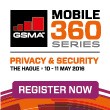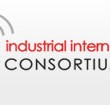

Many businesses are reaping the rewards of the connectivity that IoT provides, while many more are rapidly developing their plans to join this revolution, writes Mark Warren, the product marketing director of Perforce Software. As they do so, they are starting to appreciate the practical challenges that IoT brings: Getting products to market quickly, changing standards – or no standards, rapidly improving hardware, addressing security issues and, especially, coping with the vast amounts of data being generated. All of these challenges are putting a strain on traditional software product development and deployment processes. (more…)
April 5, 2016
Posted by: George Malim

The latest industrial revolution – Industry 4.0 for those keeping count – conjures images of drones delivering parcels, self-driving cars, smart robotics and 3D printing, wrties Mark Armstrong the vice president and managing director for EMEA at Progress. The SmartThings Living Future report created by a group of academics and futurologists recently launched its vision of the future depicting 3D printed homes, downloadable food and underwater cities. But like Marty McFly’s hoverboard which really should have but never did come to pass, technologies can only develop as fast as their previous incarnations allow: they need to be built on solid foundations. (more…)
April 4, 2016
Posted by: George Malim

What do 50+ companies deploying connected devices believe is key to delivering ambitious IoT growth expectations?
Posted by: IoT global network

Event date: May 10-12, 2016
Santa Clara Convention Centre
IoT Now is pleased to partner with Informa’s Future Connected Cars USA event that is focused on future OEM investments, V2X, infotainment and predictive intelligence. The event will provide the opportunity to engage with major automakers and rapidly expanding automotive R&D centres in Silicon Valley. Join 250+ OEMs, Tier 1s and Internet of things industry player and learn about the strategies to maximize future technology revenues. (more…)
March 31, 2016
Posted by: IoT global network

Event date: June 28-30, 2016
Olympia Grand, London
IoT Now is pleased to partner with Informa’s Connected Cars World ’16 event that is focused on business models, profitability and consumer engagement for the connected car. The event will bring together key OEM decision-makers and solution providers to identify new business strategies on how to maximise connected car revenues. Join 500+ attendees, 50+ exhibitors and hear from 100+ speakers from BMW, Audi, Volvo, Nissan and many more. (more…)
Posted by: IoT global network

Event date: May 10-11 2016
The Hague, The Netherlands
Introducing the latest event into the Mobile 360 Series! In contrast to our other regionally-focused Mobile 360 events, this one is entirely devoted to the topic of privacy and security across the global mobile enterprise ecosystem. (more…)
Posted by: IoT global network

March 30, 2016
Posted by: George Malim

The purpose and goal of oneM2M is to develop technical specifications which address the need for a common M2M service layer that can be readily embedded within various hardware and software, and relied upon to connect myriad devices in the field with M2M application servers worldwide. (more…)
Posted by: IoT global network

Posted by: IoT global network

The Industrial Internet Consortium (IIC) was founded in March 2014 to bring together the organisations and technologies necessary to accelerate the growth of the Industrial Internet by identifying, assembling and promoting best practices. (more…)
Posted by: IoT global network